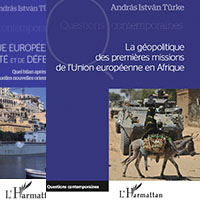You are here
Diplomacy & Crisis News
Le coup d'État de la tech autoritaire
The Normalisation of Ballistic Disproportionality
Missile Types Used Against Civilian Population Centres
There would be little doubt from the audience who are watching The Sopranos that when one Tony’s crew is directed to do a hit on someone, that the order came directly from the Tony. This common and basic concept is of course the same in criminal law. When a crime is connected and directed by another coordinated source, the agent committing the crime is the extended arm of the one who directed the crime, as are all agents in law. This basic concept that is understood in many forms does not seem to enter the realm of international relations for some unfortunately, despite it always been a set law in their own legal codes.
When the concept of halting military actions takes place, the expectation is that both sides of a conflict would end their aggression. Reasonably, a failure to do so would illicit an equal and appropriate response following any violation of this agreement. It comes as a surprise that over the last while, the persistent ballistic missile fire and anti-shipping artillery arrives at the end of conflicts deemed complete, and the silence seems to be broken only for a moment despite aggression ever increasing.
There is no better examples of the post Fordow policy of the international community than the silence on direct attacks and abuses against sailors and ships operating in the Red Sea. While Iran backed Houthis continue to normalise ballistic missile attacks into population centres and the targeting of civilians, acts tantamount to the most aggressive of Russian crimes in Ukraine, Western powers massage narratives while their allies sink into bunkers and their ships sink into the Red Sea. The death of sailors by drones and anti-ship missiles shows that when you cease, they fire, and the European Union’s placating of terror to the point of ignoring their own killed and kidnapped sailors leaves little faith that they will protect their own interests. Peace through placating known threats does more to enable conflict than ensure a ceased conflict, and at this late point in the game, its time to start playing. While the US Administration’s efforts deserve every ounce of respect for their good faith actions to end many of these diverse global conflicts, allowing threats to metastasize will eventually destroy any productive efforts and achievements for the Administration.
Western allies are perhaps at their weakest point in modern history in 2025. While a massive push for a multilevel peace initiative took place in Egypt with many of the political actors in the region and from abroad, recent harms from placative policies were brushed aside and claims were made that failed policy lead to peace. It can be claimed that delusional policies can be excused if they fail, as to error is human, but this is not a valid measure. In legal examples the concept of negligence takes claims of lack of ability to the edge of intent, and it is hard to believe that with so much evidence to the contrary, that such a policy comes from a place of ignorance. To this question of intent, any actions agreed upon need to take place with an understanding of allies and adversaries, where adversaries to peace should play no role in the process as their intent will never bring calm to the region. Perhaps this was always the case.







